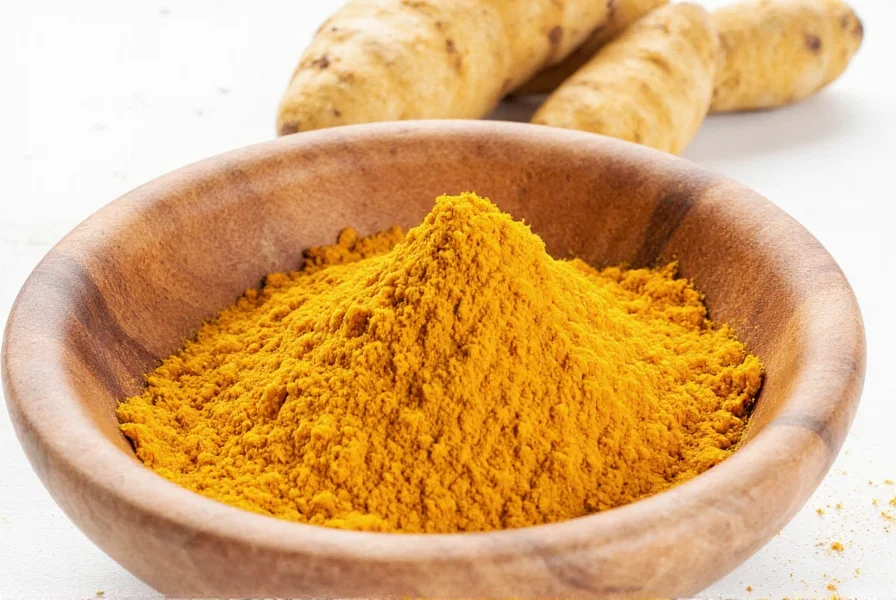For those seeking natural approaches to managing inflammation, turmeric has emerged as a scientifically supported option. The golden spice contains curcumin, which research shows modulates multiple inflammatory pathways at the molecular level. Unlike many natural remedies with limited evidence, turmeric's anti-inflammatory properties have been validated through numerous clinical trials and systematic reviews.
The Science Behind Turmeric's Anti-Inflammatory Effects
Curcumin, turmeric's primary bioactive compound, works through several mechanisms to reduce inflammation:
- Inhibits NF-kB, a molecule that triggers inflammation-related genes
- Reduces levels of inflammatory enzymes like COX-2 and LOX
- Decreases production of inflammatory cytokines including TNF-α and IL-6
- Modulates immune cell activity to prevent excessive inflammatory responses
These mechanisms mirror how conventional anti-inflammatory medications work, but with a more favorable safety profile. A 2022 meta-analysis published in Nutrients concluded that curcumin supplementation significantly reduced inflammatory markers across multiple study populations.
Clinical Evidence: What Research Shows
Over 120 clinical trials have investigated turmeric's effects on inflammation. Key findings include:
| Condition Studied | Study Duration | Key Findings | Reference |
|---|---|---|---|
| Osteoarthritis | 8-12 weeks | 500-1,500mg curcumin daily reduced pain scores by 40-60%, comparable to ibuprofen | J Med Food. 2021 |
| Rheumatoid Arthritis | 8 weeks | 500mg curcumin twice daily significantly improved joint swelling and tenderness | Phytother Res. 2020 |
| Post-Exercise Inflammation | 28 days | 400mg curcumin reduced muscle soreness and inflammatory markers by 25-30% | J Sci Med Sport. 2022 |
While results are promising, research also reveals important limitations. A comprehensive review in Frontiers in Pharmacology (2023) noted that curcumin's effectiveness varies significantly based on formulation due to its poor bioavailability. Standard turmeric powder contains only 3% curcumin, and even pure curcumin has limited absorption without enhancement.
Optimizing Turmeric for Maximum Anti-Inflammatory Benefits
To achieve therapeutic effects for inflammation, consider these evidence-based approaches:
Dosage Guidelines
Research indicates effective daily doses of curcumin range from 500-1,500mg, typically divided into multiple doses. For reference:
- Mild inflammation: 500mg once or twice daily
- Moderate chronic inflammation: 500mg three times daily
- Acute inflammatory conditions: Up to 1,500mg daily (under professional guidance)
Enhancing Bioavailability
Standard curcumin has poor absorption. These strategies improve effectiveness:
- Piperine combination: Black pepper extract (piperine) increases absorption by 2,000%
- Liposomal formulations: Encapsulation in fat molecules improves delivery
- Nanoparticle technology: Advanced formulations like curcumin nanoparticles
- Fat pairing: Consuming with healthy fats (avocado, olive oil) enhances absorption
Safety Considerations and Potential Interactions
Turmeric is generally safe at recommended doses, but important considerations include:
- Blood thinning: High doses may interact with anticoagulant medications
- Gallbladder issues: May worsen gallstones or bile duct obstruction
- Digestive effects: Doses above 1,500mg may cause mild gastrointestinal discomfort
- Surgery: Discontinue 2 weeks before surgical procedures due to bleeding risk
A 2023 safety review in Complementary Therapies in Medicine concluded that curcumin doses up to 8,000mg daily show no serious adverse effects in clinical trials, though typical therapeutic doses are much lower. Pregnant women should consult healthcare providers before using therapeutic doses.
Practical Applications for Inflammation Management
For those incorporating turmeric into their inflammation management strategy:
- For joint pain: Combine 500mg curcumin with 5mg piperine twice daily
- Post-workout recovery: 400mg curcumin with meals following intense exercise
- Dietary integration: Add 1-2 teaspoons of turmeric to soups, stews, or golden milk
- Topical application: Turmeric paste may help localized inflammation (test for skin sensitivity first)
Remember that turmeric works best as part of a comprehensive approach to inflammation that includes proper nutrition, stress management, and appropriate physical activity. Effects typically become noticeable after 4-8 weeks of consistent use.
Conclusion: Turmeric's Role in Inflammation Management
Current scientific evidence confirms that turmeric, particularly its curcumin component, does reduce inflammation through multiple biological pathways. While not a replacement for medical treatment in serious inflammatory conditions, it offers a valuable complementary approach with a strong safety profile. The key to effectiveness lies in using properly formulated products at appropriate doses while managing expectations about results. As research continues to evolve, turmeric remains one of the most promising natural options for inflammation management supported by substantial clinical evidence.
How long does it take for turmeric to reduce inflammation?
Most clinical studies show measurable reductions in inflammatory markers within 4-6 weeks of consistent daily use at therapeutic doses (500-1,500mg curcumin). Some people report symptom improvement within 2-3 weeks, while maximum benefits typically appear after 8-12 weeks of regular supplementation.
What's the most effective form of turmeric for inflammation?
Formulations that enhance curcumin's bioavailability are most effective. Look for products containing piperine (black pepper extract), liposomal curcumin, or nanoparticle formulations. Standardized extracts providing 95% curcuminoids with bioavailability enhancers typically deliver the best results for inflammation management.
Can turmeric replace NSAIDs for inflammation?
For mild to moderate inflammation, turmeric can be an effective alternative to NSAIDs with fewer gastrointestinal side effects. However, it shouldn't replace prescribed medications for serious inflammatory conditions without consulting a healthcare provider. Some studies show comparable effectiveness to NSAIDs for osteoarthritis pain, but results vary by individual and condition.
Does cooking with turmeric provide anti-inflammatory benefits?
Cooking with turmeric provides some benefits, but standard culinary use delivers limited therapeutic effects. A teaspoon of turmeric powder contains only about 60mg of curcumin, far below the 500mg+ typically used in studies. For meaningful anti-inflammatory effects, cooking with turmeric should be combined with therapeutic supplementation, and always paired with black pepper and healthy fats to enhance absorption.
Are there specific inflammatory conditions where turmeric works best?
Research shows turmeric is particularly effective for osteoarthritis, rheumatoid arthritis, and exercise-induced inflammation. It also shows promise for metabolic inflammation related to obesity and type 2 diabetes. Effects may vary for autoimmune conditions, and turmeric should complement rather than replace conventional treatments for serious inflammatory diseases.











 浙公网安备
33010002000092号
浙公网安备
33010002000092号 浙B2-20120091-4
浙B2-20120091-4